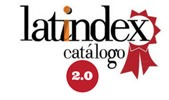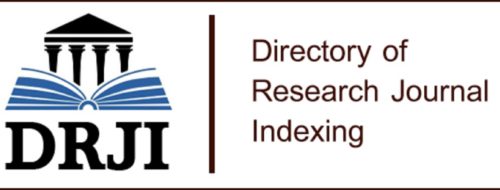Características psicosociales y acoso escolar. Caso de estudio: Adolescentes del Colegio 4 de Noviembre de Manta
DOI:
https://doi.org/10.56124/nuna-yachay.v5i10.0051Palabras clave:
Adolescente, acoso escolar, intimidación, desigualdadResumen
Las formas de comunicación entre los niños y adolescentes han ido generando en ellos una herramienta de violencia verbal llamado acoso escolar, el mismo que tiene consecuencias en las siguientes etapas de desarrollo, porque van en progreso y se convierten en conductas de agresión, verbales y psicológicas, haciendo de ellos sujetos no vulnerables al sistema social. Se realizó un estudio descriptivo y transversal, desde la perspectiva cuantitativa, para caracterizar el fenómeno. Se trabajó con 104 alumnos de la Unidad Educativa 4 de noviembre, entre 14 y 15 años de edad, que cursaban el 10mo de básica; a los que se les aplicó el cuestionario “Escala de agresión entre pares”, y el test “Cisneros” de los cuales permiten evaluar si existe acoso escolar, sus modalidades e intensidad. Se obtuvo que el tipo de acoso más frecuente en la muestra resultó ser el psicológico- verbal, con escasas manifestaciones del fenómeno. Se proyectan acciones de prevención para desarrollar en la Unidad Educativa. Mediante el proceso de esta investigación se pretende determinar, si existe el acoso escolar en los estudiantes, debido a la presencia de conductas antisociales entre los mismos. Para así poder emplear una propuesta de promoción, prevención, y reforzamiento de las habilidades sociales, con el único fin de disminuir este tipo de comportamientos.
Palabras claves: Adolescente, acoso escolar, intimidación, desigualdad.
ABSTRACT
The forms of communication between children and adolescents have been generating in them a tool of verbal violence called bullying, the same one that has consequences in the following stages of development, because they are in progress and become aggressive, verbal and psychological behaviors. , making them non-vulnerable subjects to the social system. A descriptive and cross-sectional study was carried out, from a quantitative perspective, to characterize the phenomenon. We worked with 104 students from the Educational Unit November 4, between 14 and 15 years of age, who were in the 10th grade; to which the "Peer Aggression Scale" questionnaire was applied, and the "Cisneros" test, which allow evaluating whether there is bullying, its modalities and intensity. It was obtained that the most frequent type of harassment in the sample turned out to be psychological-verbal, with few manifestations of the phenomenon. Prevention actions are planned to develop in the Educational Unit. Through the process of this investigation, it is intended to determine if there is bullying in students, due to the presence of antisocial behavior among them. In order to use a proposal for promotion, prevention, and reinforcement of social skills, with the sole purpose of reducing this type of behavior.
Keywords: teenager, bullying, bullying, inequality.
Fecha de recepción: 13 de mayo de 2022; Fecha de aceptación: 04 de julio de 2022; Fecha de publicación: 09 de julio de 2022.
Descargas
Citas
Liu, H. H., Tucker, S. L. (2008). Risk factors for pericardial effusion in inoperable esophageal cancer patients treated with definitive chemoradiation therapy. International Journal of Radiation Oncology* Biology* Physics, 70(3), 707-714.
Sampieri, R. H., Collado, C. F., & Lucio, M. d. (2014). MEDOLOGÍA DE LA INVESTIGACIÓN. Mexico: JPR.
Telégrafo. (2018). 1.461 casos de bullying o acoso escolar en 4 años en Ecuador. Recuperado de El Telégrafo: https://www.eltelegrafo.com.ec/noticias/judicial/12/casos-bullying-acoso-escolar-ecuador
UNESCO. (2019). Salen a la luz nuevos datos durante el Foro Mundial sobre el Acoso Escolar. Recuperado de UNESCO: https://es.unesco.org/news/salen-luz-nuevos-datos-durante-foro-mundial-acoso-escolar
Vázquez, M. Á. (2015). Mobbing vs. Bullying: Dos términos, ¿el mismo concepto? Recuperado de Universidad de Santiago de Compostela: https://minerva.usc.es/xmlui/bitstream/handle/10347/18003/PEREIRO%20V%C3%81ZQUEZ%20MIGUEL%20ANGEL%2C%20Mobbing%20vs.%20bullying%2C%20dos%20t%C3%A9rminos%2C%20el%20mismo%20concepto.pdf?sequence=1&isAllowed=y
Villao, C. O., Peralta, P., Mogrovejo, J., & González, N. (2017). EL BULLYING, CONTEXTUALIZADO EN DOS UNIDADES EDUCATIVAS BÁSICAS DEL CANTÓN DE SANTA ELENA - ECUADOR . Revista CPI Ciencias Pedagógicas e Innovación, 80.
Zambrano, C. (2015). 12 casos de acoso escolar en Manta. Recuperado de El Diario: http://www.eldiario.ec/noticias-manabi-ecuador/245017-12-casos- de-acoso-escolar-en-manta/






3.jpg)











